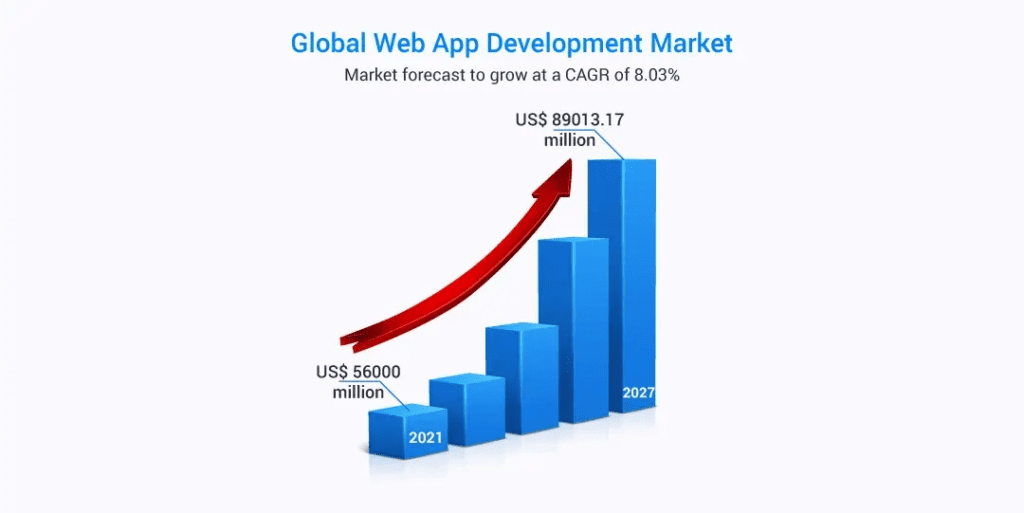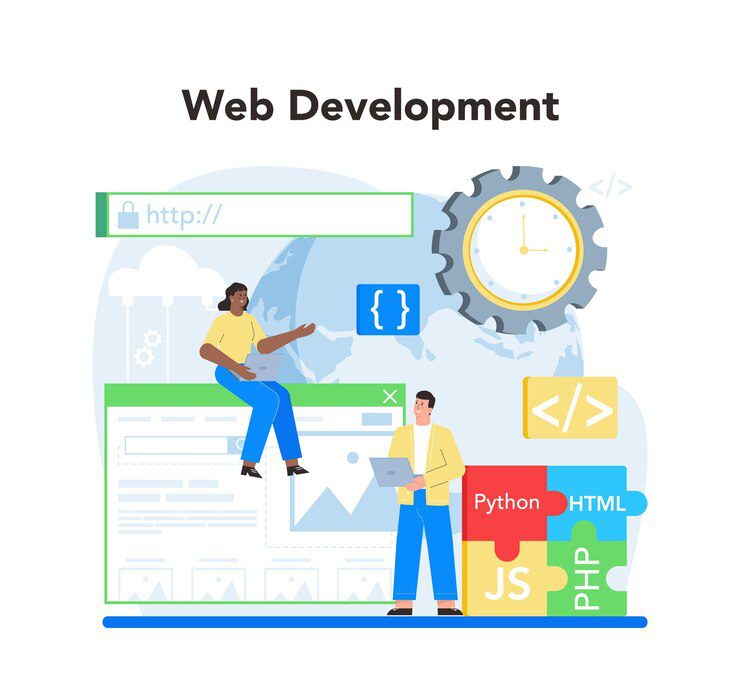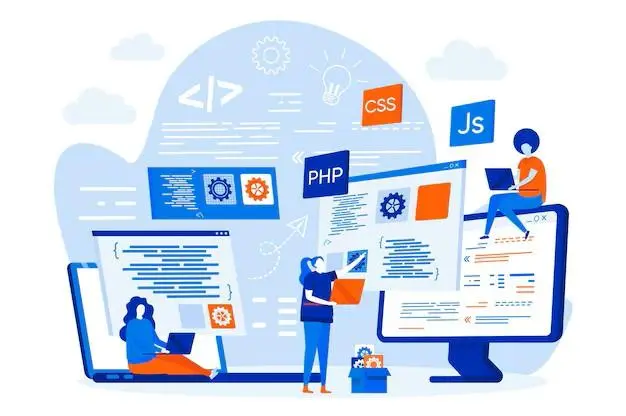Highlights
- Full stack development includes front-end (user interface) and back-end (business logic) aspects.
- Important elements include front-end and back-end technologies, databases, APIs, version control, security, and deployment practices.
- According to Veracode, 83% of applications contain at least one vulnerability, with 20% having at least one critical flaw.
- Performance testing is crucial, with 53% of users abandoning a mobile website if it takes more than three seconds to load.
Have you ever wondered what it takes to ensure your full-stack web application is ready for release? Are you confident that every feature works perfectly and that your app is secure, user-friendly, and performing at its best? Before you hit that launch button, running through a detailed checklist is important to ensure everything is in order.
In this complete guide, we’ll discuss the full stack web application checklist before release. Whether you’re a developer, a project manager, or a tech enthusiast, this checklist will help you catch any issues and refine your app for a smooth launch.
What Is Full Stack Development?

Full stack development involves creating software from start to finish. It includes both the front-end and back-end parts of the application. The front end development is necessary as it is what users see and interact with, while the back end development handles the business logic and behind-the-scenes processes.
Full-stack developers have the skills to work on all parts of the application, ensuring a smooth user experience and strong back-end support.
What are the Key Components of a Full Stack Application?
The following are the components that play an important role in full-stack application development:
- Front-end Technologies and Frameworks
- Back-end Technologies and Frameworks
- Databases and Data Management
- APIs and Middleware
- Version Control and Collaboration Tools
- Security Considerations for Full Stack Applications
- Testing and Debugging
- Deployment and DevOps
Full Stack Web Application Checklist Before Release

According to Veracode’s report, which analyzed 85,000 app tests, 83% of applications contain at least one vulnerability, with 20% of the tested apps having at least one critical flaw.
Releasing a full-stack web application is an exciting milestone, but ensuring it’s ready for the world requires thorough preparation. To guarantee your web application is well-developed before it goes live, you’ll need to follow the following full stack web application checklist before release:
- Code Review and Refactoring
Start by conducting a thorough code review. Every line of code should be examined for quality, consistency, and efficiency to catch potential bugs, security issues, or unnecessary code. Where necessary, refactor your code to simplify and optimize it, ensuring long-term scalability and maintainability.
- Security Measures
Security is a top priority. Ensure that authentication methods like OAuth or JWT are securely implemented and access restricted based on user roles. Data encryption ensures sensitive data, both at rest and in transit, is protected using strong encryption algorithms such as AES-256.
Conduct vulnerability testing to identify and patch potential security risks, including SQL injection, XSS, and CSRF attacks. Also, secure all API endpoints, ensuring they follow best practices and are accessible only to authorized users.
- Database Optimization
Database optimization is another critical step. Implement data validation rules at both the front and back end to prevent invalid or malicious data from entering your database. Proper indexing of your database queries will optimize performance and reduce query times. Additionally, ensure regular backups and a disaster recovery plan to prevent data loss.
- Performance Testing
Google’s new research shows that 53% of people will leave a mobile website if it takes more than three seconds to load.
Therefore, performance testing ensures your application can handle high traffic and maintain speed. Load testing will help you simulate high-traffic conditions. Moreover, it allows you to identify and fix bottlenecks.
Speed optimization can be achieved by compressing files, optimizing images, and leveraging browser caching. Similarly, database performance should be tested and optimized to manage large datasets efficiently without compromising speed.
- User Experience (UX)
Good user experience (UX) design can increase website conversion rates by 400%.
Therefore, your fully responsive application must offer a seamless experience across all devices and screen sizes.
The navigation must be intuitive and user-friendly, allowing users to find what they need quickly. Moreover, your application should meet WCAG standards to ensure it’s usable by individuals with disabilities.
- Cross-Browser Compatibility
Cross-browser compatibility is another crucial aspect. Test your application across all major browsers, including Chrome, Firefox, Safari, and Edge, to ensure consistent functionality and appearance. Additionally, test your application on various devices, such as desktops, tablets, and smartphones, to ensure it performs well across different platforms.
- Error Handling and Logging
Effective error handling and logging are necessary for maintaining a stable application. Implement robust error handling mechanisms to manage unexpected issues gracefully, providing users with informative 403 or 431 error messages. Set up logging to capture errors, warnings, and significant events. This will be crucial for troubleshooting and monitoring the application’s health.
- SEO Optimization
Search engine optimization (SEO) is vital for your application’s visibility. Ensure on-page SEO is optimized with proper meta tags, alt text for images, keyword optimization, and clean URL structures.
Optimize your content for relevant keywords, making it informative, engaging, and valuable to your audience. Create and submit an XML sitemap to search engines to facilitate efficient crawling and indexing of your web application. Additionally, configure your robots.txt file to guide search engines on which pages to crawl and index.
- Deployment Checklist
As you prepare for deployment, ensure all environment variables and configuration files are correctly set up for production. Implement a continuous integration/continuous deployment (CI/CD) pipeline to automate testing and deployment processes. Also, you can trust our CI/CD development services to reduce the risk of human error.
Additionally, have a rollback plan to revert to the previous stable version if something goes wrong during deployment.
- Final Testing
Final testing is necessary before releasing your application. Perform end-to-end tests to ensure all components of your application work together as expected. User acceptance testing (UAT) is also valuable. It engages end-users in testing to gather feedback and ensure the application meets their needs and expectations.
- Monitoring and Analytics Setup
Setting up monitoring and analytics is essential for post-launch success. Implement monitoring tools like New Relic or Datadog to track application performance uptime and detect issues in real time. Analytics tools like Google Analytics or Mixpanel can monitor user behavior, engagement, and other key metrics. Moreover, you can also choose our logging & monitoring DevOps services to monitor your web app performance.
Summary
Full stack development covers everything from the look of your app to how it works behind the scenes. To ensure your application is ready for the public, following a full stack web application checklist before release is crucial. By carefully checking each part of your application and ensuring everything works well together, you’ll be set to launch a reliable and user-friendly product.






